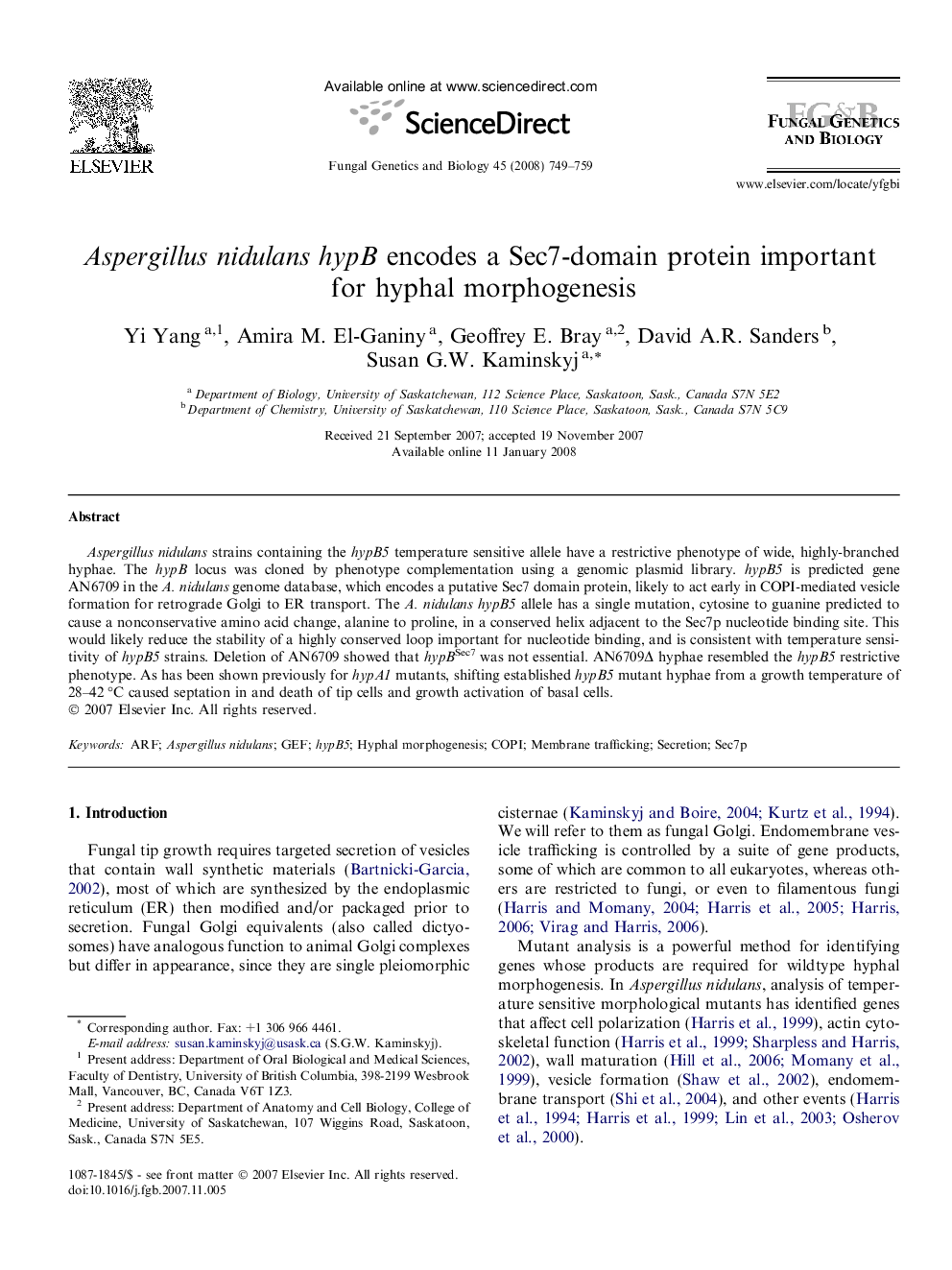| Article ID | Journal | Published Year | Pages | File Type |
|---|---|---|---|---|
| 2181495 | Fungal Genetics and Biology | 2008 | 11 Pages |
Aspergillus nidulans strains containing the hypB5 temperature sensitive allele have a restrictive phenotype of wide, highly-branched hyphae. The hypB locus was cloned by phenotype complementation using a genomic plasmid library. hypB5 is predicted gene AN6709 in the A. nidulans genome database, which encodes a putative Sec7 domain protein, likely to act early in COPI-mediated vesicle formation for retrograde Golgi to ER transport. The A. nidulans hypB5 allele has a single mutation, cytosine to guanine predicted to cause a nonconservative amino acid change, alanine to proline, in a conserved helix adjacent to the Sec7p nucleotide binding site. This would likely reduce the stability of a highly conserved loop important for nucleotide binding, and is consistent with temperature sensitivity of hypB5 strains. Deletion of AN6709 showed that hypBSec7 was not essential. AN6709Δ hyphae resembled the hypB5 restrictive phenotype. As has been shown previously for hypA1 mutants, shifting established hypB5 mutant hyphae from a growth temperature of 28–42 °C caused septation in and death of tip cells and growth activation of basal cells.
